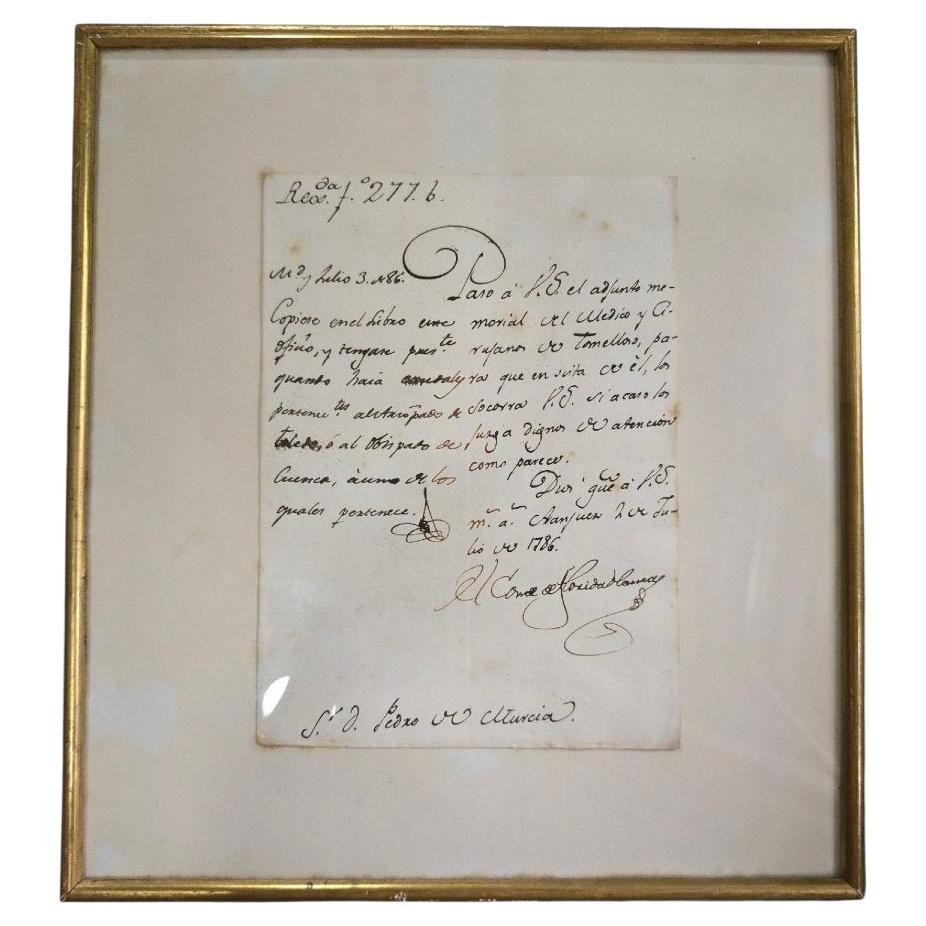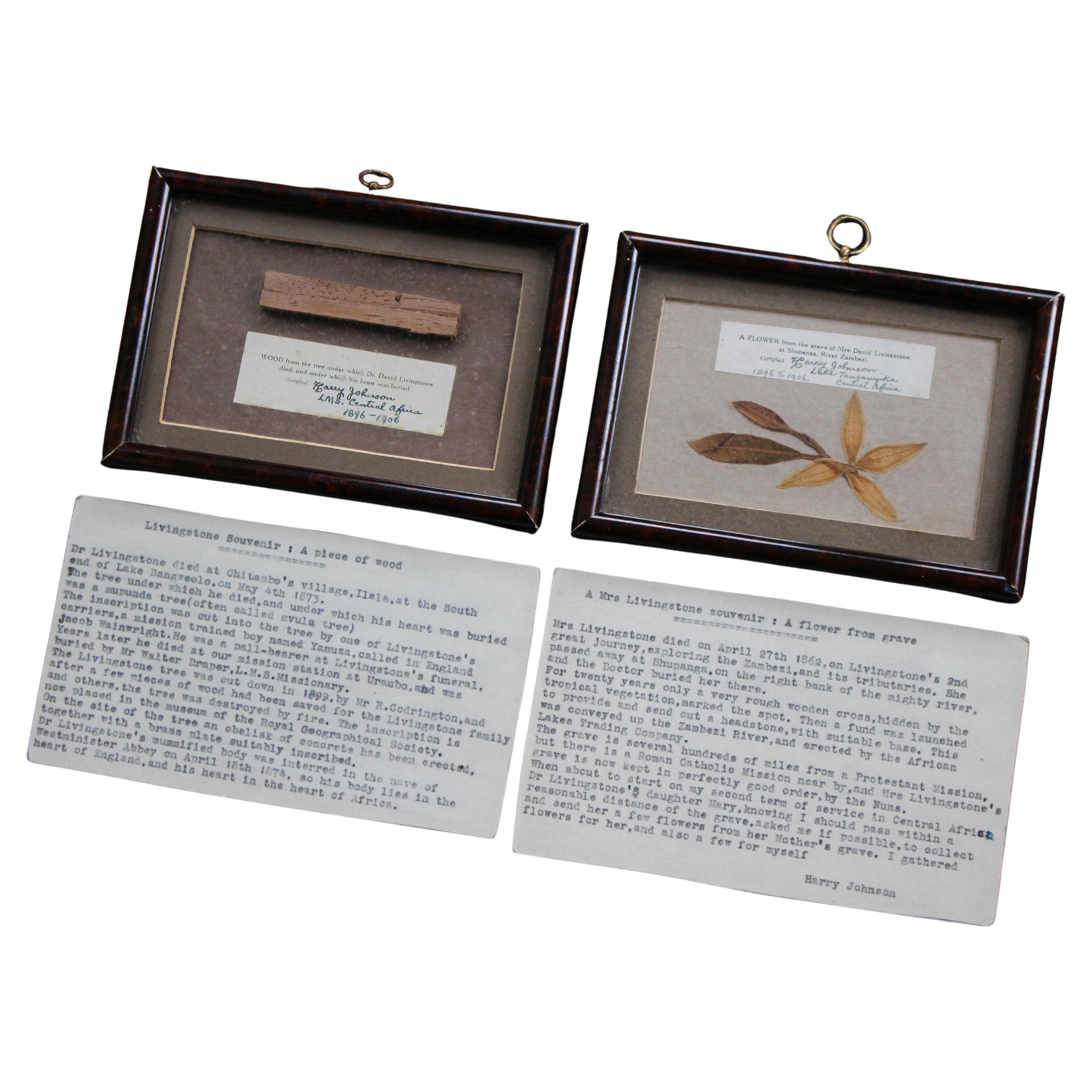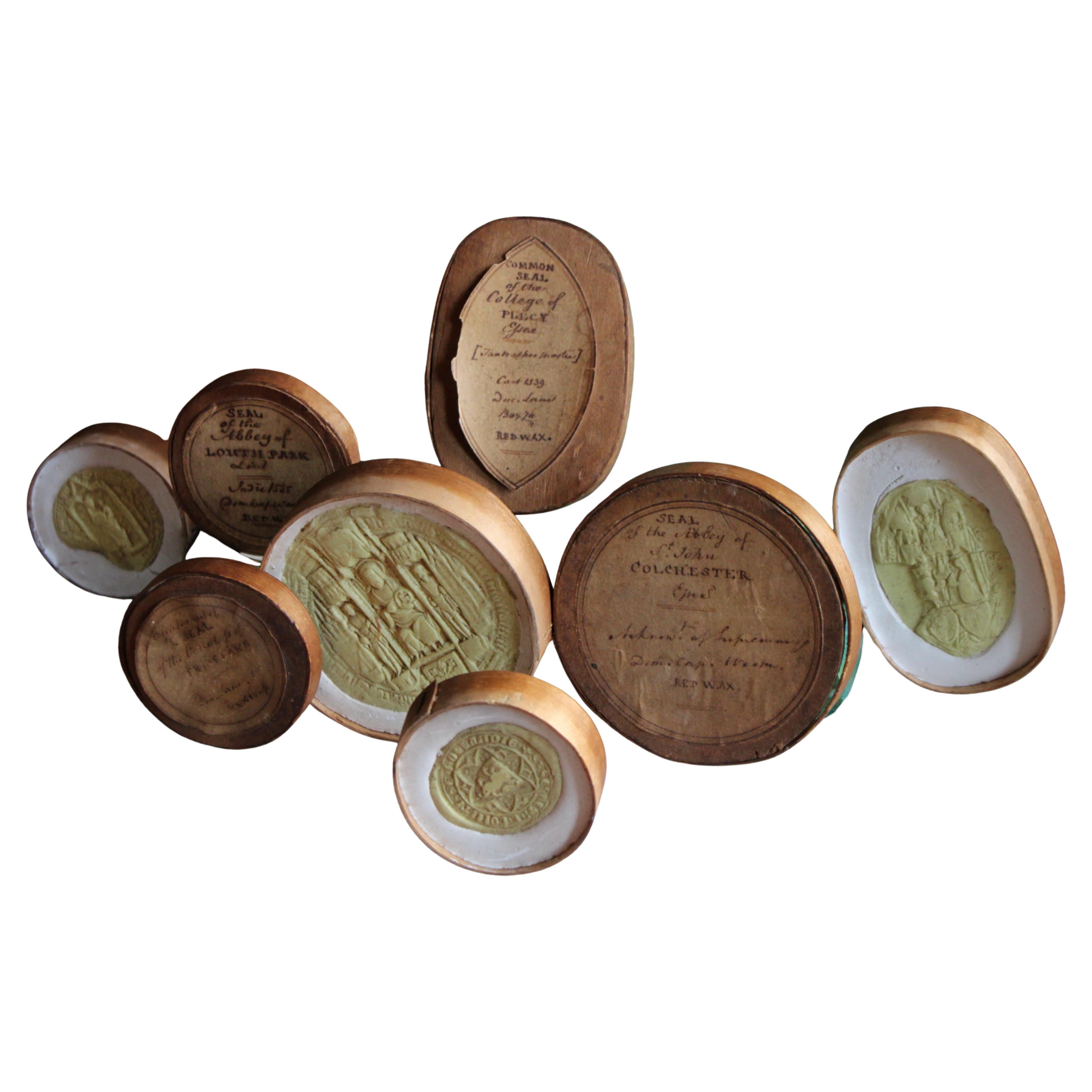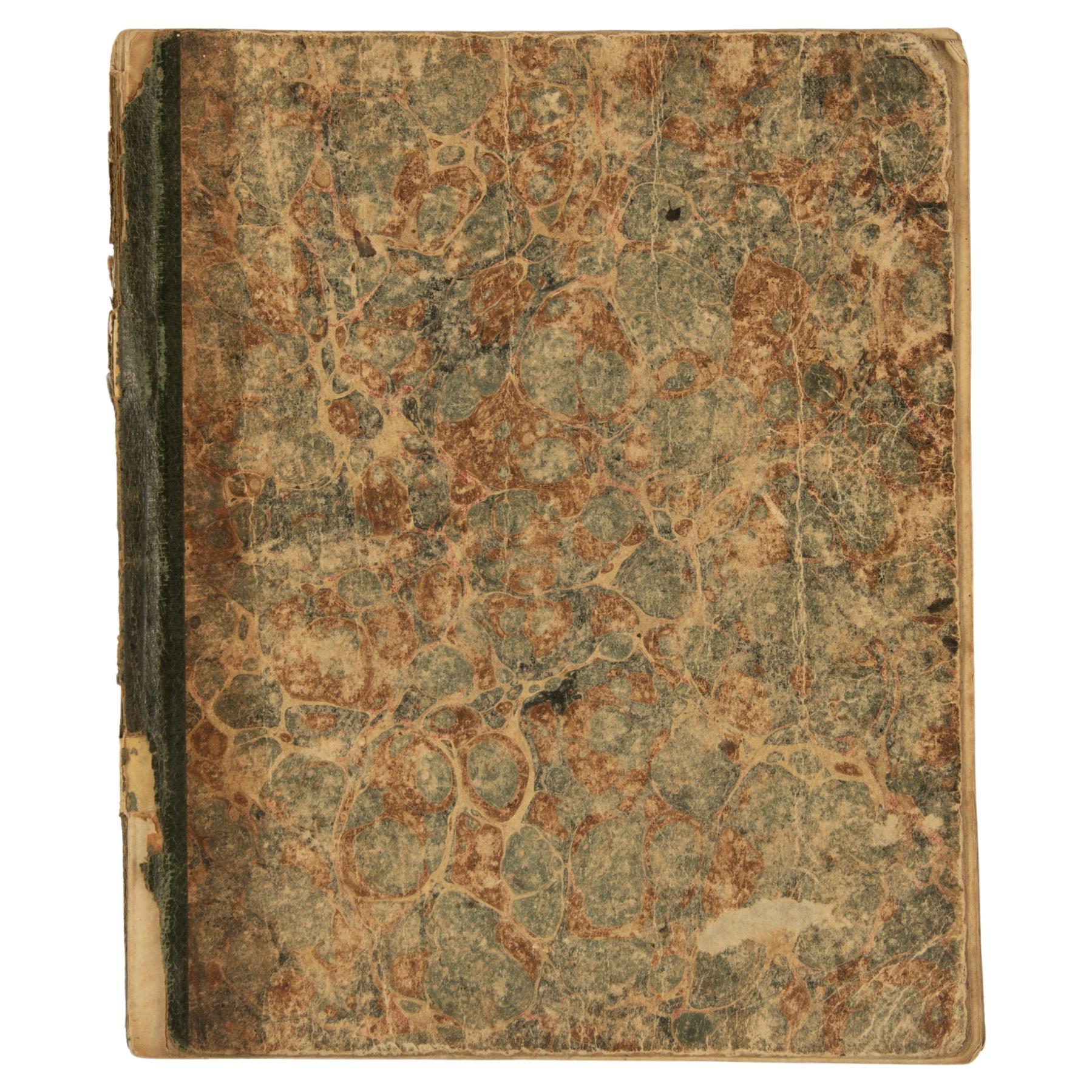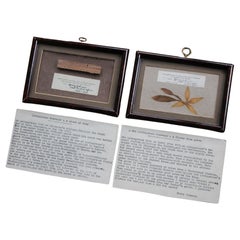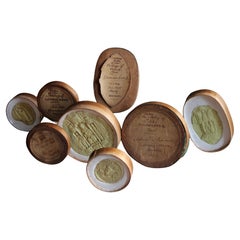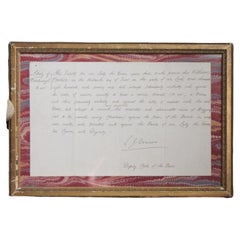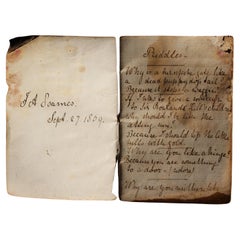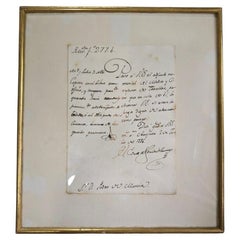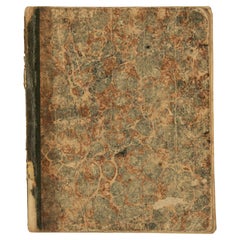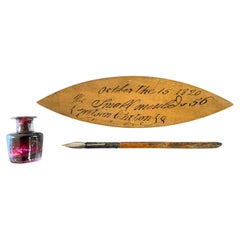Items Similar to A Piece of Cake from Princess Charlotte's Wedding to Prince Leopold 1816 Curio
Want more images or videos?
Request additional images or videos from the seller
1 of 9
A Piece of Cake from Princess Charlotte's Wedding to Prince Leopold 1816 Curio
$954.28
£695
€811.99
CA$1,325.13
A$1,446.03
CHF 758.47
MX$17,562.50
NOK 9,473.66
SEK 8,953.08
DKK 6,060.37
About the Item
A piece of the wedding cake from Princess Charlotte's Wedding to Prince Leopold of Saxe-Coburg-Saalfeld on 2 May 1816 at Carlton House in London.
The cake segments sit within a cloth pouch, with its original hand penned note and envelope.
Princess Charlotte of Wales (Charlotte Augusta; 7 January 1796 – 6 November 1817) was the only child of George, Prince of Wales (later George IV), and Caroline of Brunswick. She was expected to ascend the British throne after the deaths of her grandfather, George III, and her father, but died in childbirth at the age of 21, predeceasing them both.
Charlotte's parents disliked each other from before their arranged marriage and soon separated. The Prince of Wales left most of Charlotte's care to governesses and servants, only allowing her limited contact with her mother, who eventually left the country. As Charlotte grew to adulthood, her father pressured her to marry William, Hereditary Prince of Orange (later King of the Netherlands). After initially accepting him, Charlotte soon broke off the intended match. This resulted in an extended contest of wills between her and her father, who finally permitted her to marry Leopold of Saxe-Coburg-Saalfeld (later King of the Belgians). After a year-and-a-half of happy marriage, Charlotte died after giving birth to a stillborn son.
Envelope is 14/8cm
- Dimensions:Height: 3.15 in (8 cm)Width: 5.52 in (14 cm)Depth: 0.2 in (5 mm)
- Materials and Techniques:
- Place of Origin:
- Period:
- Date of Manufacture:1816
- Condition:Wear consistent with age and use.
- Seller Location:Lowestoft, GB
- Reference Number:1stDibs: LU4612145988972
About the Seller
5.0
Gold Seller
Premium sellers maintaining a 4.3+ rating and 24-hour response times
Established in 2013
1stDibs seller since 2019
202 sales on 1stDibs
Typical response time: <1 hour
- ShippingRetrieving quote...Shipping from: Lowestoft, United Kingdom
- Return Policy
Authenticity Guarantee
In the unlikely event there’s an issue with an item’s authenticity, contact us within 1 year for a full refund. DetailsMoney-Back Guarantee
If your item is not as described, is damaged in transit, or does not arrive, contact us within 7 days for a full refund. Details24-Hour Cancellation
You have a 24-hour grace period in which to reconsider your purchase, with no questions asked.Vetted Professional Sellers
Our world-class sellers must adhere to strict standards for service and quality, maintaining the integrity of our listings.Price-Match Guarantee
If you find that a seller listed the same item for a lower price elsewhere, we’ll match it.Trusted Global Delivery
Our best-in-class carrier network provides specialized shipping options worldwide, including custom delivery.More From This Seller
View All19th Century Mary & David Livingston Memorial Relic Heart Buried Beneath 1896
Located in Lowestoft, GB
A very odd Victorian collection of curiosity, a section of the tree that the Scottish physician, congregationalist and pioneer Christian missionary David Livingston was buried under ...
Category
Antique Mid-19th Century Zambian Historical Memorabilia
Materials
Hardwood, Natural Fiber, Glass
Collection of Late 18th Century English Wax & Plaster Abbey & College Seals
Located in Lowestoft, GB
A collection of four late 18th century replica wax seals, encased in plaster and housed in softwood boxes. They also retain their original pointed oval and circular hand written labe...
Category
Antique Late 18th Century English Religious Items
Materials
Plaster, Boxwood
19th Century Police Report Buggery With A Horse 1871 William Prudice Curio
Located in Lowestoft, GB
Poor little horsey!!!
A penned police report 1871 by a L. J. Deacon Deputy Clerk of the Peace
William Prudice on the thirteenth day of June, in the year of our lord one thousand ei...
Category
Antique 19th Century English Historical Memorabilia
Materials
Glass, Giltwood, Paper
19th C Wee Book of Riddles Hand Penned Notebook, by a J.A Soames 1869
Located in Lowestoft, GB
A interesting and comical miniature hand penned riddles notebook, by a J.A. Soames Sept 27. 1869
Retaining its original patterend orange paper cover, 32 pages in total with 29 pages...
Category
Antique 19th Century English Books
Materials
Paper
19th Century Secret Leather Bound Book Box
Located in Lowestoft, GB
A secret leather bound book box with the most beautiful marbled paper interior.
mid 19th century in age, English in origins.
Age related wear and abrasions
21/13.5/3.5cm
Category
Antique Mid-19th Century English Victorian Decorative Boxes
Materials
Leather, Paper
19th Century Maritime Curiosities Launch Bottle Shards Naval Sailors
Located in Lowestoft, GB
Trio of 19th century maritime curiositys, two glass bottle neck shards from the launch bottles of two ships. Also an unused streamer from another ships maiden voyage All have the wax...
Category
Antique 19th Century English Late Victorian Nautical Objects
Materials
Glass, Paper
You May Also Like
Letter signed by the Count of Floridablanca – 1786
Located in Madrid, ES
Rare historical document: handwritten letter signed in 1786 by José Moñino y Redondo, better known as the Count of Floridablanca, a prominent 18th-century Spanish political figure an...
Category
Antique Late 18th Century Spanish Other Historical Memorabilia
Materials
Paper
A Fascinating Ship’s Log And Journal Relating To The Whitway/Whiteway
Located in Lymington, Hampshire
A Fascinating Ship’s Log And Journal Relating To The Whitway/Whiteway Family of Bristol Mariners, Along With A Dispatch Letter From The Bureau in St Petersburg Relating to One Of The...
Category
Antique Early 19th Century Nautical Objects
Materials
Paper
Wilson Chilton’s mahogany Naval Architects/draughtsman box of curves/templates
By Gillows of Lancaster & London
Located in Lymington, Hampshire
Wilson Chilton’s mahogany Naval Architects/Naval draughtsman box of curves and templates, probably by Gillows still retaining around 100 superb quality...
Category
Antique 19th Century English Historical Memorabilia
Materials
Mahogany
19th Century German Baronship Document, Archduke Ludwig III of Hessen
Located in Vero Beach, FL
19th century German Baronship Document, Archduke Ludwig III of Hessen
Outstanding document bound with threaded rope in crimson red leather with burnished 24-carat gold embossed. A...
Category
Antique 19th Century German Historical Memorabilia
Materials
Leather, Parchment Paper
Emma, Lady Hamilton’s ‘Orange Blossom’ Box for Her Wedding Flowers
Located in Lymington, Hampshire
This charming keepsake comprises an oval paper lined wooden box and lid, formally a pill or pantry box, held together with a pink ribbon, inscribed on the lid The Lady Hamilton’s Orange blossom. Lord Nelsons. Lady Hamilton. Given to me by my cousin Nellies husband, nee Nellie Harwood. Given to her by her cousin Sarah Woodrow. Alice M. Eastwood. In a domed glass case with later fabric wedding favors...
Category
Antique 1790s English Nautical Objects
Materials
Paper
Colt Distributors Quill Letter to Governor Beginning of Civil War, 1861
Located in Coeur d'Alene, ID
This handwritten (it appears with quill) letter was addressed to the Governor of the state of Ohio in 1861- the beginning of the Civil War. Tyler Davidson, one of the major Colt distributors, is offering the Ohio Militia one to two thousand Colt Navy revolvers. They "can provide 100 per day at a cost of $22.50 each." This document from the files of Civil War General...
Category
Antique 1860s American Historical Memorabilia
Materials
Other
More Ways To Browse
Prince Of Wales
Carlton House
William Of Orange
Princess Charlotte
British Throne
Singer On Sale
Tinsel Tree Antique
Vintage Belsnickle
Vintage Christmas Tree Toppers
Vintage Portable Tvs
1950s Phone
Antique Bar Memorabilia
Antique Brass Cash Registers
Antique Furniture Logos
Antique Leather Chaps
Antique Masonic Memorabilia
Antique Mercury Glass Tree Topper
Antique Metal Stencils
